How is the physical education in schools?
It has long been proven that physical education in schools is of vital and decisive role in the formation of a full-fledged personality and upbringing of the child. This item solves problems, not only to strengthen and preserve the health of schoolchildren in the future, but also social adaptation, activity and sociability.
Where are school physical education
Physical education in schools can be held in gyms, available in almost every school, specially equipped for the training site or on the street. In the gym and on-site conditions should be created for employment in accordance with the established norms. They determine how many students can be engaged at the same time on the assigned area, what should be the ceiling height in the room, also set standards obligatory presence of ventilation and heating, required lighting, number of outbuildings and dressing rooms, showers and sports equipment. On the grounds are sports games: football, basketball and volleyball. For them, the regulations establish the location of the gate for football, basket ball and volleyball nets.
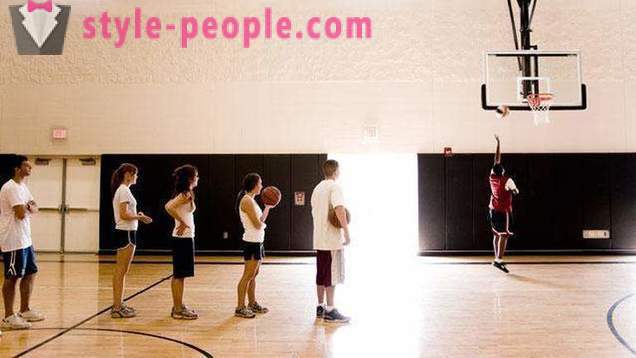
What is in physical training lesson
Physical education classes at school, as a rule, consist of three parts: introduction, main and final.
The prologue, or warm-up, helping to prepare the baby for the upcoming load. The main part of children learning a new exercise, run, jump, metal, rope climb, play outdoor games, carried the baton. And in the final part of the students are invited to relax to the heartbeat and pulse returned to normal, but the body has had time to rest.
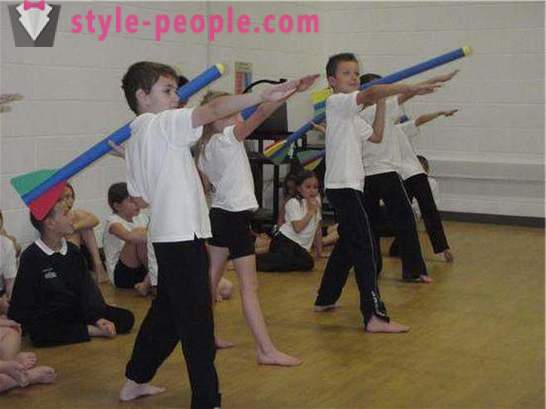
It is noticed that physical education classes in schools are usually tiresome for children if they are built strictly according to the program. Therefore, during these lessons the children are often invited independent motor activity. The teacher carries out such lessons either in the gym or outdoors, with or without sports implements it. It is also very useful to the music of a certain system of exercises, it relieves stress schoolchildren, helps to develop in them a sense of rhythm, coordination and attention.
Fizkultminutki
The term "physical education in schools" also includes a warm-up or fizkultminutki that can be carried out in other lessons. If the teacher sees that the children are tired and do not learn the material, it is possible for a couple of minutes to allow them to perform simple exercises, sit-ups and tilts, it helps to relieve mental stress. In recent years, fizkultminutki conducted mainly in elementary and middle school less often, and about high school, unfortunately, completely forgotten. And for good reason. Spending a few minutes to warm up, the teacher might get better results of their work, as well as good performance.
The Importance of medical examinations
All schools have a mandatory routine medical examinations students whose aim is to assess the state of health of each student, his level of physical fitness. Based on the data of the medical examination, the doctor recommends the best types of exercise and the amount of load. During medical examinations revealed the students, which by virtue of their physical and mental abnormalities shown physiotherapy, such children are exempt from physical training in schools. But this is wrong, because these children are most in need of the beneficial effects of exercise on their weakened body. Depending on the state of health of schoolchildren are divided into 3 groups of physical training: basic, preparatory and special medical. Classes for each group sets school.
Physical education: the program in the primary school
Lesson in elementary school is aimed primarily at the general health and physical development of pupils, as well as the development of an independent and creative thinking schoolchildren. Physical education in the 1-3-graders need children, as it helps to raise endurance, helps develop agility, flexibility, coordination, basic skills in team games.
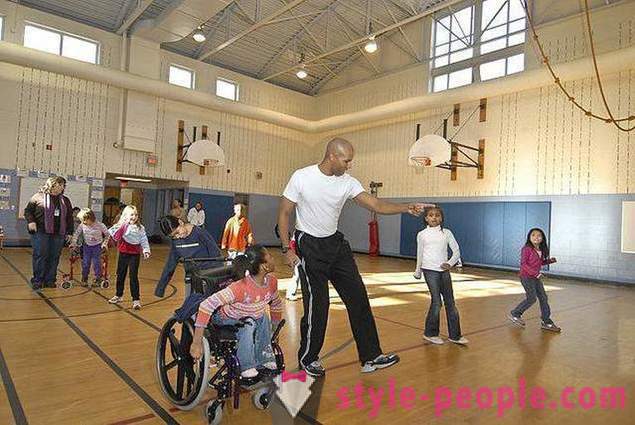
Lesson of physical education in primary schools is very important. The task of the teacher of physical training in junior high - to convey to younger students are available for their age, physical training skills, motor skills, and the ability to apply that knowledge in everyday life.
Physical education in primary school helps children to keep the body in good physical shape from the early years, forming a respectful attitude towards their health and the health of others, educates future citizens teamwork, willingness to help, courage, compassion, sense of duty.
So what do particularly children younger classes in physical education classes? Lessons of physical training in junior focused primarily on sports games, relay races and various competitions. Theoretical classes usually take 3-5 minutes at the beginning of the lesson - the teacher tells the children the theme of the current session. In addition to games and relay races a lot of attention paid to the combatant exercises, running, walking, jumping, climbing and throwing, acrobatic movements. In northern latitudes, physical education classes also include cross-country skiing. All this is aimed at the development of movement and coordination.
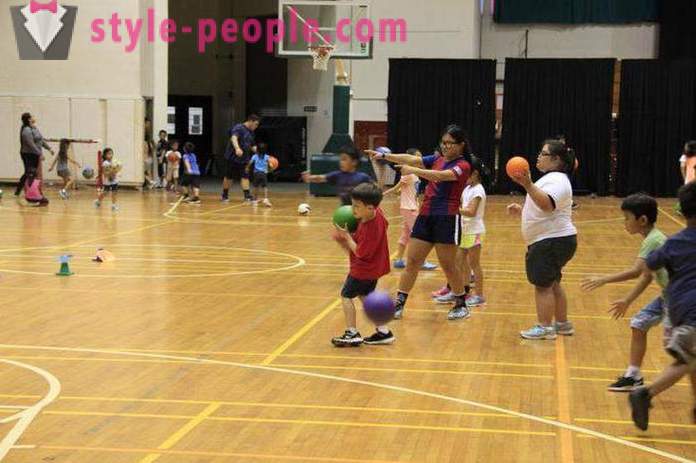
At present, gym class in junior held 3 hours per week. The program allows the substitution of one lesson per week occupation of rhythm or choreography.
physical education classes in middle school
Physical education classes at school, in middle school, helping to teach children the following skills:
- Alternating walking and running.
- Steeplechase.
- Proper breathing during movements.
- Long jump with a running start.
- High jump with a running start.
- Throw the ball into the goal from different distances.
- Catch the ball like one or both hands.
- Exercises on gym wall.
- Swimming and skiing.
In addition to these skills of physical education in middle school children are taught conduct hardening, massage, mental regulation and self-control - all included in the education process.
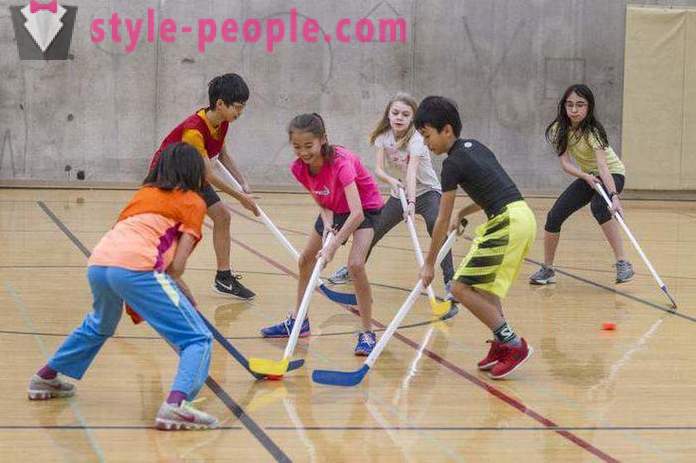
physical education classes in high school
Physical education in high school is in the formation of the younger generation habit of exercise and sports after graduation, it should orient young people to lead healthy lifestyles, tune into independent exercise in the future, teaches an understanding of the tremendous value of maintaining the right lifestyle and refusal of bad habits .
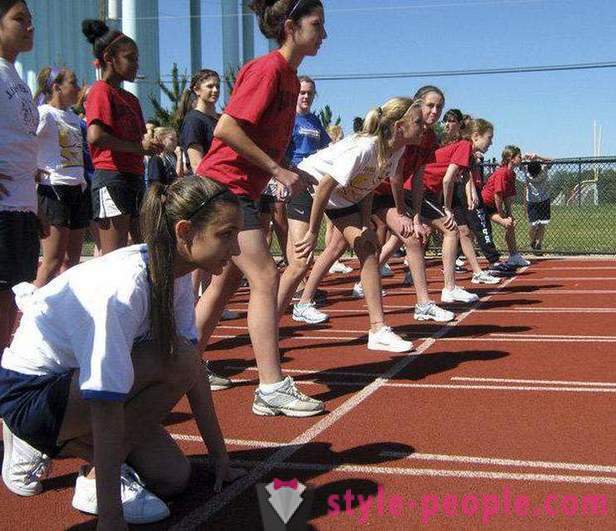
Injuries of children in physical education classes at school
Most of all, according to statistics are subject to a variety of injuries in school physical education classes in children aged 12-14 years. Sad figures show that among the teachers, coaches, teachers, health workers and parents should be carried out work on the prevention of injuries of students in physical education classes. All of these categories should be aware of the degree of traumatic each sport included in the school curriculum in physical education, as well as to keep under constant review the reasons that could lead to disastrous consequences.
Among the many causes of injuries in physical education classes, the most important are:
- Lack of control on the part of health care workers for the state of health of pupils.
- The violation of discipline during lessons.
- Defective equipment or its incompatibility with anthropometric data.
- No sports apparel and footwear pupils.
- Adverse weather conditions.
- Low qualified teacher or trainer.
Statistics show that the largest number of injuries to children in physical education at school, it is necessary to gymnastics.
The organization of physical education lessons in schools, according to the GEF (federal state educational standards)
Forms of organization of physical education process at school (GEF) - is directly physical education classes, sporting events and festivals, wellness workout during the day, participate in sports groups and sections, physical training and sports at home outside school. In turn, all the lessons of physical culture are divided into 3 types:
- The educational and training focus. During the lessons students are introduced with practical material and teaching knowledge of the subject (name and description of exercises, technique and performance technique, and so on. D.). At these lessons learning is a gradual formation of the motor activity of children - the initial review, in-depth training, strengthening the material and improve the acquired skills.
- Educational and informative oriented. During the lessons the children learn the basics of self-organization of physical training, learning directly to plan and carry out actions on the overall physical rehabilitation. In the learning process they actively use textbooks and teaching aids.
- The educational and training focus. It is carried out directly on the lessons of physical education for the development of physical abilities of children and their activity.
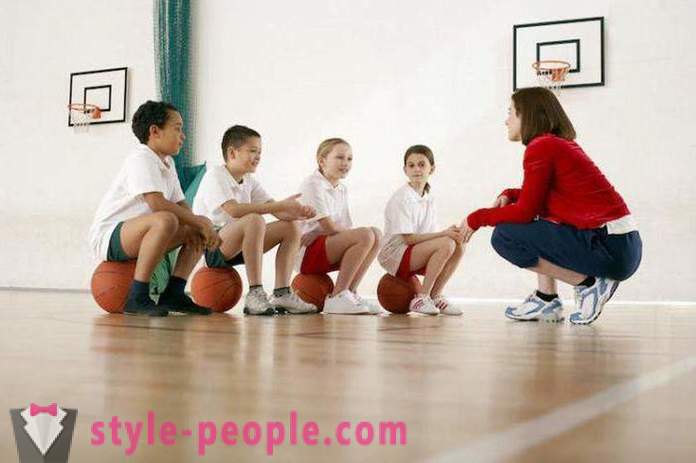
Educational Practices
Future teachers and physical education teachers are in the process of training a mandatory practice in physical education schools. During the internship students are encouraged to perform a number of tasks:
- Introduction to instruction and student-trainee program. Necessary information is represented in intern diary. The program includes visiting schools in the agreed time for love, of physical education in elementary, middle or high school. Each student-trainee must spend 6 lessons and 6 lessons on their own as a teacher assistant. The total load of practice is twelve hours per week.
- Visit 3 physical education classes at a fellow student. The purpose of these visits - to conduct a full analysis of teaching lessons.
- Develop a plan for self-training to some motor action for the period of practice.
- Write a holiday scenario for students to develop it and to hold the event.












































